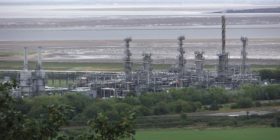UK inflation rises to 2.3% amid energy price increases

The UK’s inflation rate rose to 2.3% in the year to October 2024, up from 1.7% in September, according to the Office for National Statistics (ONS).
The increase, driven by higher gas and electricity costs, pushed the Consumer Prices Index (CPI) above the Bank of England’s 2% target for the first time since early summer.
Energy prices were a major factor in the rise, with average household bills increasing by £149 last month following an adjustment to Ofgem’s energy price cap.
Despite this, gas and electricity prices remain below their peaks from early 2023, having fallen by 36% and 22%, respectively, since then.
The wider Consumer Prices Index, including owner occupiers’ housing costs (CPIH), increased by 3.2% in the year to October, up from 2.6% in September.
Monthly CPIH growth was 0.6%, a sharp rise from 0.1% a year earlier.
Key Drivers of Inflation
The main drivers behind the inflation rise were housing and household services, where prices climbed by 5.5% over the year.
Electricity prices rose by 7.7%, while gas prices increased by 11.7% in October alone.
In contrast, inflation in the recreation and culture sector dropped to 3.1% from 3.9% in September, providing some relief.
Core CPIH, which excludes more volatile items such as energy, food, alcohol, and tobacco, rose slightly to 4.1% from 4.0% in September.
Similarly, core CPI edged up to 3.3%, compared with 3.2% a month earlier.
Historical Perspective
Although current inflation rates are modest compared to the October 2022 peak of 11.1%, they represent a reversal of the steady decline seen since the summer.
The ONS noted this is only the second time since January 2023 that both gas and electricity prices have risen.
The inflation data is likely to influence the Bank of England’s monetary policy, particularly in deciding whether further interest rate changes are needed to return inflation to its target.
Grant Fitzner, Chief Economist at the ONS, commented:
“Inflation rose this month as the increase in the energy price cap meant higher costs for gas and electricity compared with a fall at the same time last year.
These were partially offset by falls in recreation and culture, including live music and theatre ticket prices.”
Additionally, the ONS highlighted a decline in business input costs:
“The cost of raw materials for businesses continued to fall, once again driven by lower crude oil prices.”
Spotted something? Got a story? Send a Facebook Message | A direct message on Twitter | Email: [email protected] Latest News








